Keep in mind that these season are
approximate and can be different
throughout the regions of Europe, so do
some research to learn more about what
is considered to be Peak, Shoulder and
Off Seasons at your destination.
Due to their locations, climates and
crowds can be vastly different between
Nice and Paris France or between
Istanbul Turkey and Copenhagen Denmark
even at the same time of the year.
Peak Season Travel
(mid-June through August) - Summer
Travel
Summer is undoubtedly the most
popular time of year to travel and
that is why you will experience
higher prices and heavier crowds.
We have made several trips to Europe
during the summer season which have
been very enjoyable, but we did have
to deal with the heat, longer lines
as well as the higher prices and
crowds.
 One way to avoid some of the summer
congestion at least for part of the
time is to consider staying in
smaller out of the way places such
as San Gimignano or
Riomaggiore in the Cinque Terre of
Italy. You will find that
during the day, the towns can be
quite crowded with tourists but as
evening approaches, the tourists
leave (other than people like us who
were staying the night) and the
towns can become deserted and
peaceful.
One way to avoid some of the summer
congestion at least for part of the
time is to consider staying in
smaller out of the way places such
as San Gimignano or
Riomaggiore in the Cinque Terre of
Italy. You will find that
during the day, the towns can be
quite crowded with tourists but as
evening approaches, the tourists
leave (other than people like us who
were staying the night) and the
towns can become deserted and
peaceful.
Staying the night will give
you a different perspective on what
a town is like during the evening,
night and morning that other tourist
will never experience. For
example, staying the night at a
hotel on the island of Mont. St.
Michel in France will provide
the opportunity to witness the
incoming and outgoing tides that
will surround the Island Abbey with
water that you will more than likely
never witness as a daytrip tourist.
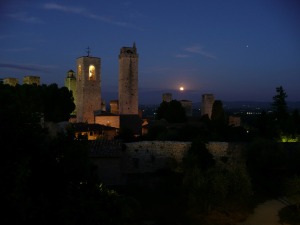 |
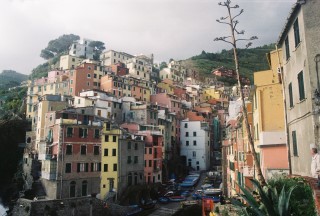 |
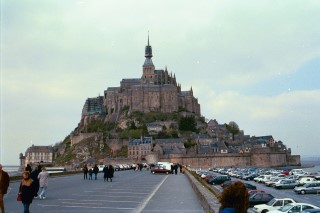 |
|
San Gimignano |
Riomaggiore |
Mont St. Michel |
|
Italy |
Cinque Terre, Italy |
France |
Living in the tourist town of
Windsor, England we experienced
heavy crowds during the summer days
changing to a ghost town in the
evenings. During the day as
the tourist busses arrived, the
entire town would be jammed with
tourists shopping, walking the town
and touring the castle. In the
evenings when the busses had
departed, everything suddenly
quieted down and things quickly
returned to normal.
 |
|
Windsor England |
Pros
- All attractions should be open
- More hours of sunlight
Cons
- Hotter weather
- Expensive flights
- Expensive hotels
- Larger crowds
- Longer lines at attractions
- Events can be sold out
Fall Shoulder Season Travel
(September through October)
 Our favorite
travel season is the Fall Shoulder
Season due to the mild temperatures,
lack of crowds and reduced cost.
Our favorite
travel season is the Fall Shoulder
Season due to the mild temperatures,
lack of crowds and reduced cost.We
visited the island of Sardinia
Italy in October one year.
This was during the time we were
living in England and found a late
Fall flight/hotel package. At
this time of year, there are
absolutely no crowds as the tourists
were gone for the season and due to
that, many restaurants and shops had
already closed. The weather was
beautiful and the water temperature when
swimming in the sea was absolutely perfect;
we practically had the entire beach
to ourselves. This was the
perfect time to get away for a long
weekend just to relax and do
nothing.
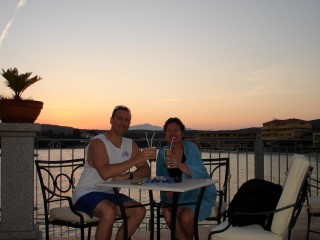 |
|
Olbia on
the Island of Sardinia,
Italy |
On another trip to Europe, we
traveled through Germany,
Luxembourg, the Alsace area of
France and Austria in late
September/Early October. On this two
week trip, we experienced only a single
day of rain in the morning. Every day we had
mostly sunny days with temps in the high 60’s or 70’s; perfect,
beautiful weather.
Gardens were in bloom, fountains were
running and crowds were
light.
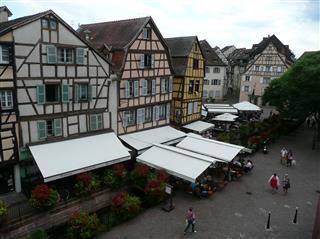 |
 |
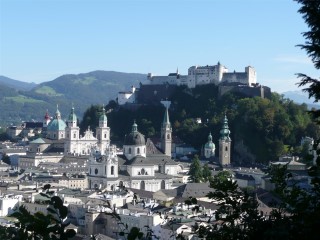 |
|
Colmar, France |
Trieburg, Germany (Black
Forrest) |
Salzburg, Austria
(Castle) |
Pros
- Morning temps can be cool
but warming up during the day
with mild temps
- Flowers may still be in full
bloom
- Fewer crowds and lines
- Less expensive travel
options
Cons
- Attractions may be closing
- Fewer hours of sunlight
- Fountains may be turned off
for the upcoming winter season
Off Season Travel
(November through March) - Winter Travel
On this trip, we flew to Paris
for New Year's before heading to
Rome for several days of vacation.
At the Louvre in Paris,
the crowds were small. Even at Leonardo
Di Vinci’s Mona Lisa, the room was not
packed with people as it can be
during the summer months and we were
allowed to take photos. We
have visited the Louvre during the
summer and found the Mona Lisa room
to be jammed
packed with tourist and photos were not allowed.
In Rome, it was cold but not
crowded. We were able to walk
right in to the Vatican Museums
without having to wait in line. In
the Sistine Chapel, there were no
crowds and we were allowed to hang
out in the Sistine as long as we
wanted. During summer peak
times, they limit the number of
people in the chapel and the amount
of time you can stay before they
usher you out so the next group can
enter. It is important to note
that photos are never allowed in the
Sistine at anytime.
 |
|
Mona Lisa - The Louvre |
|
Paris, France |
 Traveling during the Off Season may
be something to consider for a
museum trip due to the reduced
crowds.
Traveling during the Off Season may
be something to consider for a
museum trip due to the reduced
crowds.
Pros
- Fewer crowds so shorter or
no lines
- Less expensive travel
options
- Easier to travel without
reservations
Cons
- Weather can be extremely
cold
- Fewer hours of sunlight
- Attractions may be closed
- Gardens not in bloom
- Fountains will not be
running
- Requires you to bring
additional clothing on your trip
- Depending on the weather,
transportation could be an issue
Spring Shoulder Season Travel
(April through mid-June)
On a trip to France in the early
Spring, we visited Paris, Versailles
and other loctions outside of Paris.
We found the weather comfortable so
we were not dealing with the hot
temps of summer. Around Paris
and in Versailles, the gardens were
just beginning to grow with tulips
in bloom but the fountains were not
yet running. We had fewer
crowds so did not have to wait in
the longer tourist lines seen during
the summer at the main attractions.
 |
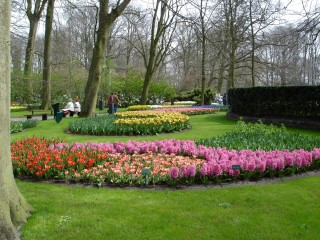 |
|
Palace of Versailles |
Keukenhof, Holland |
|
France |
Netherlands |
Pros
- Morning temps can be cool
but warming up during the day
with mild temps
- Fewer crowds and lines
- Less expensive travel
options
- Spring flowers beginning to
bloom
Cons
- Attractions may still be
closed
- Gardens may not be in full
bloom
- Fountains may not yet be
running for the summer season